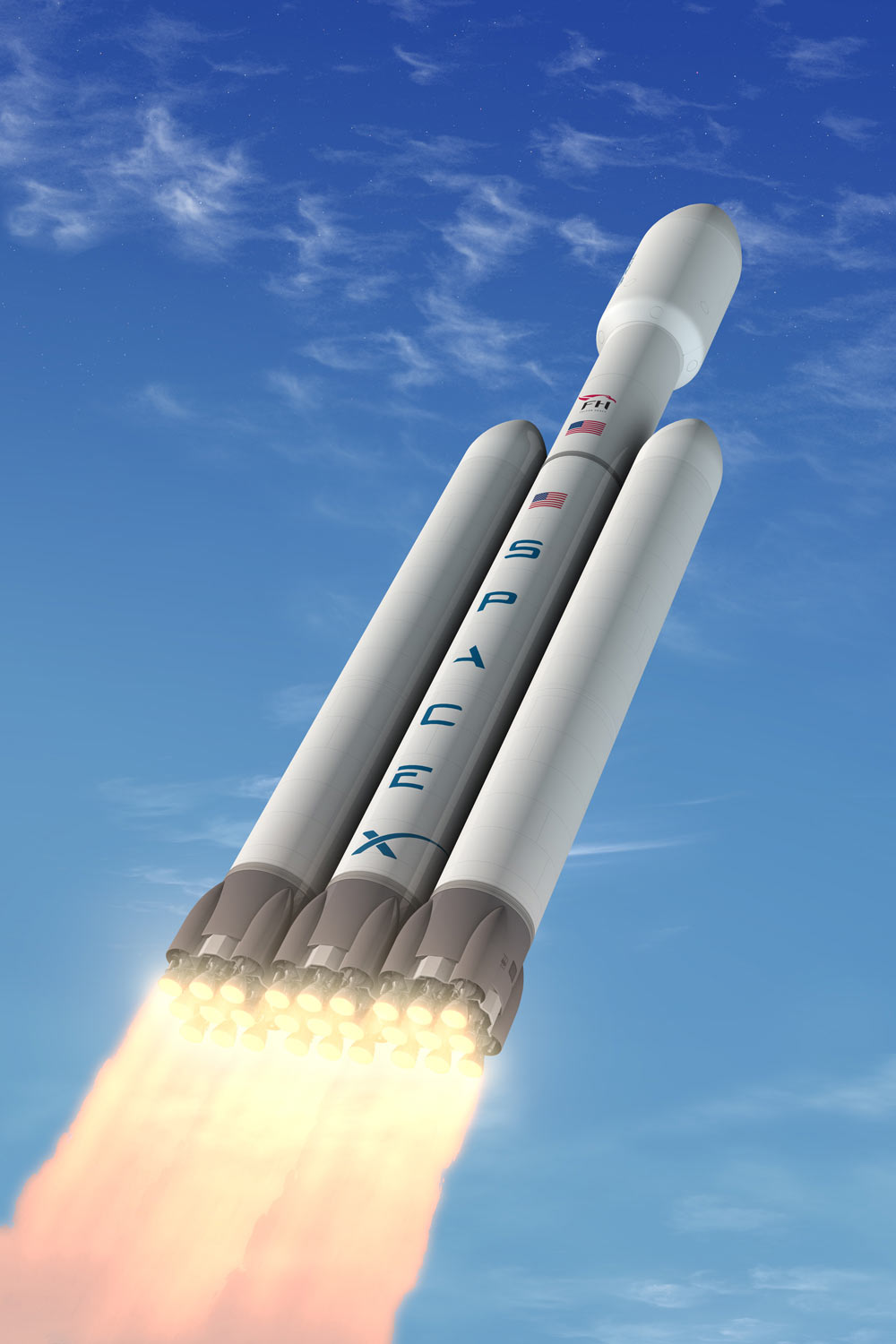From Shaking to 'Cannonballing' Ice: Here's What the Falcon Heavy Faces on Epic Test Flight

CAPE CANAVERAL, Fla. — Elon Musk hopes the first test launch of his company's Falcon Heavy megarocket will be a success — but the SpaceX CEO has provided a lot of details about how it could go wrong, from synchronized shaking to "cannonballing" ice to vaporizing oxygen.
The rocket is set to lift off during a launch window starting at 1:30 p.m. EDT (1830 GMT) today (Feb. 6), which you can watch live online here on Space.com beginning at 1:10 p.m. EST (1810 GMT). Its first stage consists of three Falcon 9 first stages, which means all 27 Merlin engines — nine per stage — must work together to give the rocket its initial boost.
That's the first thing that could go wrong. [In Photos: SpaceX's 1st Falcon Heavy Rocket Test Launch]
Musk discussed the "major pucker factor" on this mission back in July, noting that all the engines have to light at the right time, as well as mentioning the intense stress the central "core" first stage will undergo. He revisited that concept again — plus the general issues inherent in three powerful, interacting cores — in a news teleconference yesterday (Feb. 5).
"The things I think about are the relative interaction of the three core boosters; do they have some sort of resonance that we weren't anticipating? Do they shake together, potentially impacting one another, or going through the sound barrier do you get these supersonic shockwaves?" he said. Shockwaves could interact and amplify, he said, which could cause a structural failure as the rocket passes the speed of sound. There's also a chance of failure at "Max Q," which is the maximum air pressure the rocket experiences as it rises.
"I would consider it a win if it just clears the pad and doesn't blow the pad to smithereens," he said. "If it clears the pad and hopefully makes it through transonic, and Max Q, I'd say those are big wins."

And while the system that will let the side boosters separate and fall away from the spacecraft has been heavily tested, it's never been used in flight.
Get the Space.com Newsletter
Breaking space news, the latest updates on rocket launches, skywatching events and more!
Other concerns are a bit more surprising. "We're a bit worried about ice potentially falling off of the upper stage onto the nose cones or side boosters; that would be kind of like a cannonball through the nose cone," Musk said.
Because the Falcon Heavy's components are modified Falcon 9 stages, Musk said that most of the unknowns come early in the flight.
"Once the second stage separates from the center booster, we are in much more known territory," he said. "That's another big win, and then we're in a relatively normal regime because it becomes like a Falcon 9 at that point," he added later.
"And then everything from then on is relatively known except for the very long-duration coast through a very high-radiation environment."
On its path out into the solar system, Musk said, the spacecraft will have to spend 6 hours passing through the Van Allen belts, giant doughnut-shaped wings of radiation that surround Earth. Earth's magnetic field sweeps up incoming charged particles and diverts them toward those regions — which is good for life on Earth, but dangerous for the Falcon Heavy.
"It's going to get whacked pretty hard," he said. "And also the fuel could freeze, and the oxygen could vaporize, all of which could inhibit the third burn, which is necessary for the trans-Mars injection."
Musk has been lowering public expectations for this launch, frequently commenting on its riskiness and saying the company will be able to continue development in the event of failure. And the mission payload, a cherry-red Tesla Roadster, adds to the feel of whimsy. But the test flight's success would be "a monumental milestone" for SpaceX, and Musk admits he's cautiously optimistic.
"I'm sure we've done everything we could to maximize the chance of the success of this mission," Musk said. "I think once you've done everything that you can think of, [if] it still goes wrong, well, there's nothing you could have done. I feel at peace with that."
And if the launch is successful, the reward is great: "If the test flight works, I think we'd be ready to put satellites on the next mission," Musk said. "There's so much that would be confirmed to work if this flight works … as soon as you have even one successful flight, you've eliminated the possibility of a design flaw."
"Thereafter you have errors of consistency, which is did you make the rocket the same way, did you launch it the same way, and did you launch it under the same conditions," he added. "But eliminating errors of design is massive, and even one flight will do that."
One thing Musk's not worried about? "I'm not worried about the car," he said. "It'll be fine — least of my concerns, I hope."
Email Sarah Lewin at slewin@space.com or follow her @SarahExplains. Follow us @Spacedotcom, Facebook and Google+. Original article on Space.com.
Join our Space Forums to keep talking space on the latest missions, night sky and more! And if you have a news tip, correction or comment, let us know at: community@space.com.

Sarah Lewin started writing for Space.com in June of 2015 as a Staff Writer and became Associate Editor in 2019 . Her work has been featured by Scientific American, IEEE Spectrum, Quanta Magazine, Wired, The Scientist, Science Friday and WGBH's Inside NOVA. Sarah has an MA from NYU's Science, Health and Environmental Reporting Program and an AB in mathematics from Brown University. When not writing, reading or thinking about space, Sarah enjoys musical theatre and mathematical papercraft. She is currently Assistant News Editor at Scientific American. You can follow her on Twitter @SarahExplains.









